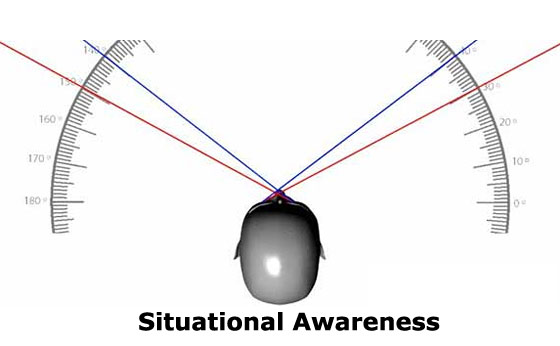A Situated Approach to Situation Awareness (SA)

Situation awareness (SA) is a concept that describes an operator’s understanding of “what’s going on” during the management of a dynamic system. Endsley (1995) was at the forefront of SA research when she published the Three-Level Model. Chiappe et al. (2014) developed the Situated SA Approach intended to augment Endsley’s Three-Level Model. The situated SA approach is one that is based on an ecological framework that explores how people use interactions with external representations to limit costly internal processing and storage. Rather than creating a detailed, stable internal representation of the world, the situated approach asserts that operators instead store general scene schemata that indicate what objects are located in the surrounding environment and where they are located.
CHAAT has worked to establish the situated SA approach. Chiappe et al. (2012) explains how the Situated Approach can be used to describe SA in team contexts, making the distinction between weak and strong shared SA, and argues that strong SA enhances communication and increases team cohesion. In addition, Chiappe et al. (2012) proposes that the situated SA approach, in conjunction with Pickering and Garrod’s (2004) Interactive-Alignment Model, explains how shared SA is acquired, relying on automatic processes enacted when individuals interact in conversations. This approach can be utilized to study team SA in many complex systems.
References
Chiappe, D., Rorie, R. C., Morgan, C. A., & Vu, K. P. L. (2012). A situated approach to the acquisition of shared SA in team contexts. Theoretical Issues in Ergonomics Science, 15(1), 69-87, doi:10.1080/1463922X.2012.696739
Chiappe, D., Vu, K.-P., L., Rorie, C., & Morgan, C. (2012). A situated approach to shared situation awareness. In Proceedings of the Human Factors and Ergonomics Society Annual Meeting (pp. 748-752). Place of Publication: Sage Publications.
Endsley, M. R. (1995). Toward a theory of situation awareness in dynamic systems. Human Factors, 37, 32-64
Pickering, M. J. & Garrod, S. (2004). Towards a mechanistic psychology of dialogue. Behavioral and Brain Sciences, 27, 169-226





